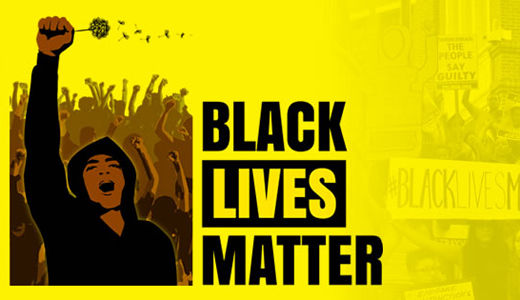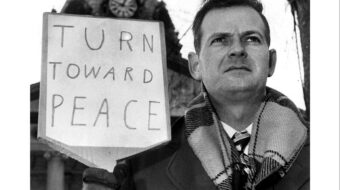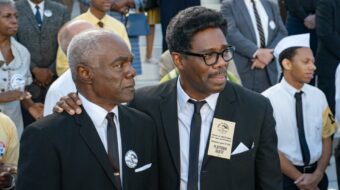
CHICAGO – Sustained, vibrant organizing for police accountability in Chicago is making an impact, on this year’s elections and beyond. Amid public outcry over her handling of the Laquan McDonald shooting case, Cook County State’s Attorney Anita Alvarez is currently leading in the polls in her bid for re-election. A recent Chicago Tribune poll shows Alvarez with 34 percent of voter support. But Kim Foxx, who supports reparations for victims of police torture, among other police accountability policies, has 27 percent of voter support; and Donna More has 12 percent. What is more, 26 percent of the voters are still undecided. That 26 percent will prove to be the determining factor if Alvarez is to win a primary that hinges to a large degree on public perception of the way cases are handled in Cook County, specifically those involving the Chicago Police Department. Activists have long protested the city’s handling of police involved shootings. In recent months, demonstrations across the city have highlighted the disparity between citizens protesting peacefully in the streets and police in military regalia pushing and shoving those citizens as they cry out for justice.
Across the country, people are protesting crimes by the police against black youth and the courts’ frequent failure to prosecute the officers who commit those crimes. This new manifestation of the Civil Rights movement has quickly gained national and international visibility. Featuring a distributed network of young leaders, savvy use of technology, and a focus on system-wide change rather than ousting a few bad cops, the Movement for Black Lives represents a politically important moment in civil rights organizing in the U.S.
On a national level, people such as Alicia Garza, co-founder of #BlackLivesMatter, and Rashad Robinson of ColorofChange have galvanized this generation of youth. Locally, activists such as Damon Williams, director of the Let Us Breathe Collective, and Jeremey Johnson (a poet and coach who is active in the Chicago Movement for Black Lives) have done the same.
Much has been written about the Movement for Black Lives and the various youth movements around the country. Some may see this as another movement that will reach its apex within a couple of years and then die as quickly and as quietly as the Occupy Movement did. According to Johnson and Williams, those sentiments are erroneous and short sighted. “As long as racist systems like the criminal justice system are allowed to continue business as usual, the youth movement around police crimes will continue and grow,” said Johnson.
Although Garza and Robinson are seen as leaders on a national level, Chicagoans seem less sure of who actually leads the movement here. Damon Williams said, “This movement has definite leaders in Chicago but most people are missing it. Americans are accustomed to leaders being individual white men who are either academics or religious. This current movement is lead by a diverse group of people, an inclusive group of people which includes women, various ethnicities and sexual identification. We want to expand the notion of civil rights. We want to change the notion of what constitutes a leader.” Said Johnson, “There are strategic benefits in such a diversity. Voices that have gone unheard and unrecognized in previous years are now being heard and will no longer be ignored.”
Both young men say they believe this leadership style not only gives voice to marginalized communities but also develops leadership from the bottom up. They admit this structure has its difficulties , especially in terms of accountability. Without a clear chain of command, things get left undone or are poorly done. Many loathe being in front and have to be pushed. Still, they say, this type of leadership helps those with undiscovered leadership abilities realize they can do more than they thought they could.
The catalyst for Johnson’s activism was his own treatment at the hands of police-similar to that of other young black men. A student at Chicago’s Columbia College, he was repeatedly stopped by police while skateboarding from building to building to get to class. The final indignity, he says, was being accosted on his front porch as he put his key in the front door. “Police… pulled over, got out [of] the car and yelled at me to stop what I was doing and raise my hands. I was fumbling with my keys and dropped them on the porch along with my backpack and skateboard. I was lucky I had a yellow key chain which could in no way be mistaken for a weapon. After raising my hands, the police searched me and found my wallet with my ID and saw that I was standing on my front porch. After giving me back my wallet, they left without so much as a word and certainly without an apology. From that moment on,” he said, “I knew I had to get involved. Although I’ve attended other social justice demonstrations and walked several picket lines, participating in Black Lives Matter has shown me that one person can and does make a difference.”
What is different about today’s movement has been its spontaneity and sustained urgency. Activists Johnson and Williams attribute this to technology and the existence of social media. Although racist policies and police brutality have long been prevalent in the black community, in past decades people had to wait for mainstream media to make those issues known to the public. People heard of such atrocities at church, or by word of mouth. Often it would be weeks before police shootings made it to the newspapers or nightly news. But technology has changed the way news is delivered. Citizens with cell phones become journalists in a matter of seconds, recording police misconduct and then broadcasting those posts on social media and the internet. Protests can now be organized in a matter of hours. It also means that violent actions by police can be seen almost as soon as they happen, making it harder for city officials and the police department to hide them.
Because of the advances of technology, groups such as the Movement for Black Lives have garnered international attention in such a brief period of time. This group began with the use of the hashtag #BlackLivesMatter on social media in response to the Trayvon Martin murder and the subsequent trial and acquittal of George Zimmerman. Protests across the country gained in numbers and attention after the subsequent slayings of Michael Brown in Ferguson, MO and Eric Garner in New York City. The protests, particularly in Ferguson, resulted in violent confrontations between the police and the protestors to such a degree that the governor eventually called in the National Guard.
Chicago has seen its share of these protests. After the grand jury failed to indict the police officer accused of choking Eric Garner to death, protestors took to the streets in 2014, marching through the Loop and briefly closing down Lake Shore Drive. Since that time, there have been a number of similar protests in Chicago’s downtown area. Thousands marched on the Magnificent Mile disrupting businesses on the busiest shopping day of the year, Black Friday, to protest the 2014 shooting death of the unarmed Laquan Macdonald by a Chicago Police officer and the apparent cover up by the city and the police department. Tapes made available to the public in December show the officer shooting Macdonald repeatedly after the teen is down on the ground. Public outcry from the video’s release has already led to the resignation of Chicago police superintendent Garry McCarthy.
On December 27, 2015, a Chicago grandmother and a mentally disturbed young man were shot and killed in a single incident by the police who were answering a domestic violence call. Actions such as these have led protestors to call for the resignation of Emanuel and Alvarez. Williams, however, does not see the resignation of either Alvarez or Emanuel as the solution to the problem. He asserts that the problems are much deeper than any individual. He states that Black people have been the victims of oppression since slavery and that this recent spate of police brutality is nothing new. “Oppression has been prevalent for decades and pressure has been building for just as long. In the past 40 years, there has been an increase in the number of black men imprisoned. There has been a decrease in the number of jobs. Homes have been lost in record numbers within our communities. The education system has faltered. That pressure has been building and it was bound to be released at some point. Unfortunately releasing that frustration has been met with violence instead of solutions.”
Williams said that BYP is focused on the two national agendas recently announced – the Agenda to Build Black Futures, a policy agenda focusing on economic Justice and the Agenda to Keep Us Safe, a public safety agenda focusing on implementing steps to decriminalize Black youth and increase community oversight of the police.
Proclaimed Johnson, “As long as there are racist systems, there will be a movement of youth visibly and vocally advocating for their civil rights. This is just the beginning.”
Image: Black Lives Matter, Facebook.












Comments